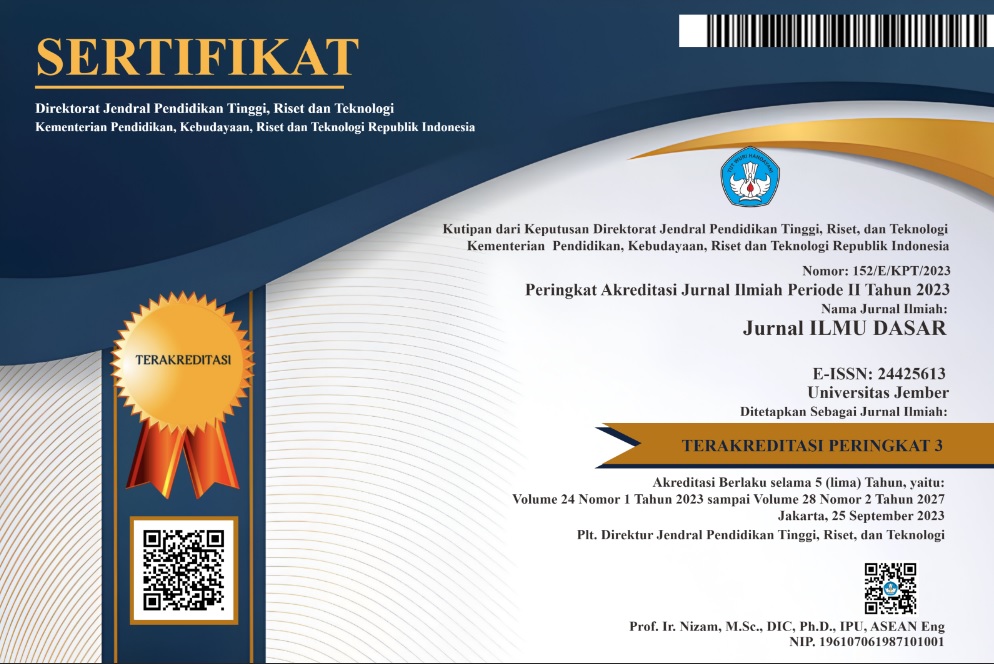Potential of Waste as Raw Silk Worm Biodegradable Surfactant
DOI:
https://doi.org/10.19184/jid.v17i1.2671Abstract
Silkworm pupa is byproducts of silkworm farms are not fully utilized. This study aims to assess the potential silkworm waste as a raw material surfactant "biodegradable". Silk pupa oil has 43.70% triglyceride. The characterisation by the spectra FTIR showed the degradation results in wavelength 1050-1300 cm-1 and 1690-1760 cm-1 indicated the consecutive C‒O and C=O group of alcohol/ether/carboxylic acids/esters, and the wave number 2500-2700 cm-1 indicated the presence of O‒H groups of the carboxylic acid with hydrogen bonds. GC-MS analysis showed the components of palmitic acid β-monogliseride, α-monopalmitin, palmitic chloride acid, oleic acid, linoleic acid chloride. FTIR spectra degradation products Mono-diglyceride provide distinctive peaks that appear at wavelength 1041.56 cm-1 and 3659.61 cm-1 that showed group C-OH and OH, respectively. The performance test results of surfactant to the benzene-water system showed no effect of surfactant that is as an emulsifier. Silk pupa oil contains components that can be converted into a biodegradable surfactant.
Keywords: silkworm pupa, surfactant, glycerolysis, monoglyceride
Â








